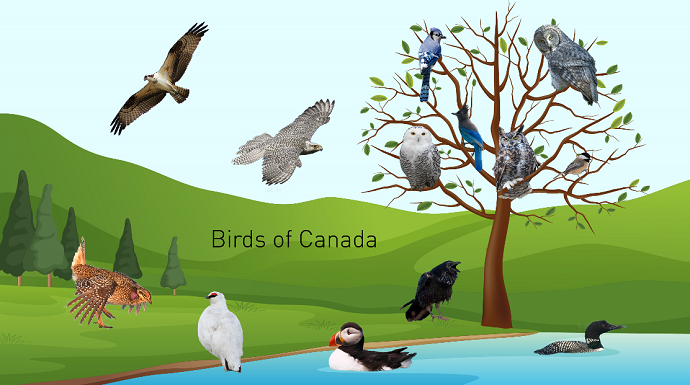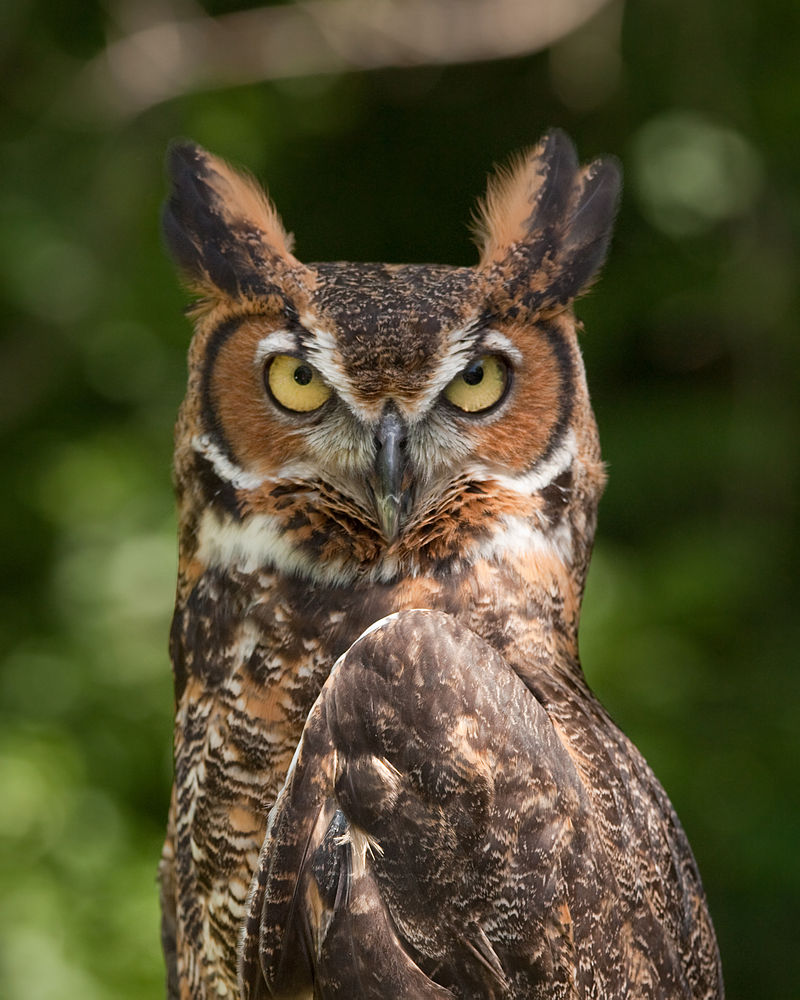Spot Canada's provincial birds. Can you name them all?
Digital Reporter
Thursday, March 24, 2016, 12:58 PM -
![]() SEE YOURSELF ON TELEVISION!: Every hour at :02, :12, :22, :32, :42 and :52 we feature the best viewer-submitted photos. Tune in to see if your photo is featured. | UPLOAD HERE
SEE YOURSELF ON TELEVISION!: Every hour at :02, :12, :22, :32, :42 and :52 we feature the best viewer-submitted photos. Tune in to see if your photo is featured. | UPLOAD HERE

Newfoundland and Labrador - Atlantic puffin
Noted for its black crown and brightly-coloured beak and legs, the Atlantic puffin is the only puffin native to the Atlantic Ocean. Close to 95% of all the puffins in North America breed near the coasts of Newfoundland and Labrador.
According to government officials, the largest puffin colony in the western Atlantic can be found 32 km south of St. John's, at the Witless Bay Ecological Reserve. Approximately 225,000 pairs of birds frequent the area.
Prince Edward Island - Blue jay
The blue jay became PEI's official bird in 1977, following a province-wide public vote.
Blue jays are a common site in PEI year-round, but the best time to spot them is during the winter.
Nova Scotia - Osprey
Once an endangered species, the osprey population has rebounded thanks, in part, to conservation efforts in Nova Scotia.
You can watch these magnificent birds in action with a live ospreycam, powered by Nova Scotia Power and the Museum of Natural History.
New Brunswick - Black-capped chickadee
This bird gets its name from its distinct 'chicka-dee-dee-dee' call, which the birds use as a distress signal or to make others aware of their presence.
Quebec - Snowy owl
The snowy owl became Quebec's official bird in 1987. It was chosen because it represents the region's white winters and is a symbol for nature conservation.
Ontario - Common loon
The common loon became Ontario's official bird in 1994. It is a common sight on lakes and rivers in the province.
NEXT PAGE: PROVINCIAL BIRDS OF WESTERN CANADA
Manitoba - Great grey owl
Bird watchers across North America will scramble to catch a glimpse of this elusive bird. Manitoba is one of the best places in the country to see great grey owls in action, making it a perfect fit for the province's bird emblem.
Saskatchewan - Sharp-tailed grouse
The sharp-tailed grouse was chosen at Saskatchewan's official bird due to its year-round presence in the province.
Alberta - Great-horned owl

This bird can be found in Alberta's forests and river valleys in great numbers year-round.
Photo credit
British Columbia - Steller's jay

A three-month campaign in 1987 ended with the steller's jay being selected as British Columbia's official bird. These striking creatures are commonly found in residential areas that are close to forests.
Northwest Territories - Gyrfalcon
The gyrfalcon is the largest of all falcons, measuring up to 61 cm in length.
These birds typically winter in the Northwest Territories and were chosen as the region's official bird in 1990.
Nunavut - Rock ptarmigan

Most birds head south in the fall, but the rock ptarmigan embraces the cold weather and remains in Nunavut all year.
Because of this, it is a common feature in the art and folklore of indigenous peoples.
Yukon - common raven
The common raven is another bird that doesn't mind the cold and can be found in the Yukon year-round.
These intelligent creatures are a common theme in indigenous folklore.



